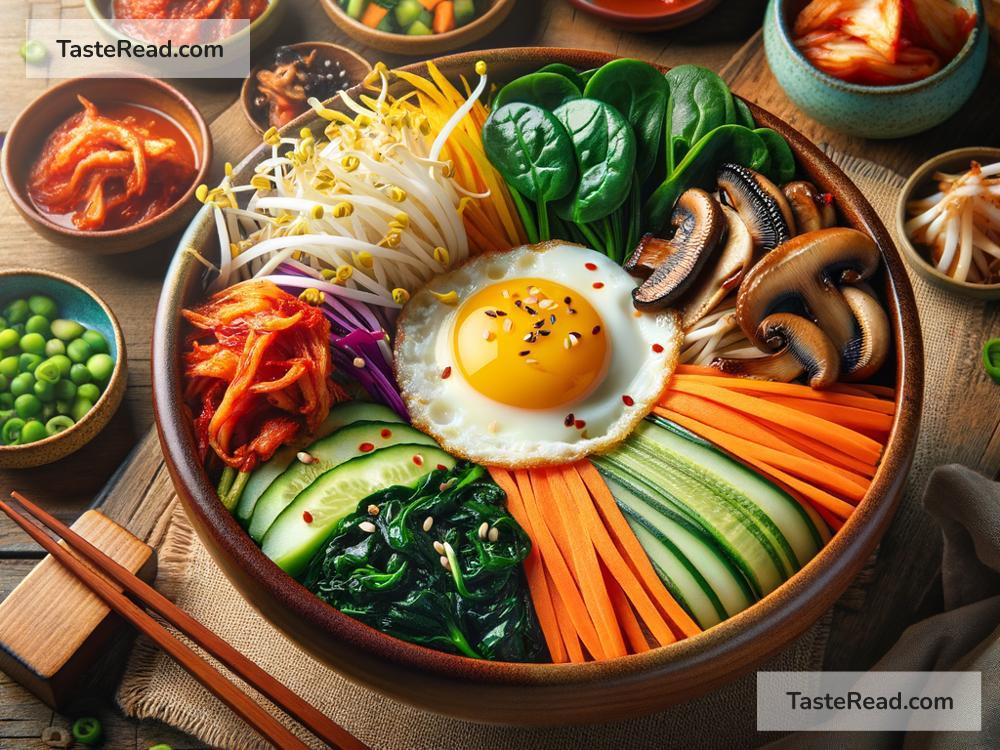How to Create a Spicy Korean Bibimbap: A Simple Guide
If you love vibrant flavors, colorful dishes, and meals packed with nutrition, Korean bibimbap might be perfect for you! Bibimbap, pronounced “bee-bim-bap,” means “mixed rice” in Korean. It’s one of Korea’s most beloved dishes and consists of rice, a variety of vegetables, a spicy sauce, and usually some protein, such as beef or an egg. The best part? You can mix it up with your own favorite ingredients!
In this blog, we’ll guide you step-by-step on how to make a spicy Korean bibimbap, even if it’s your first time cooking Korean food. Don’t worry—this recipe is simple, fun, and delicious.
What Makes Bibimbap Special?
Bibimbap is all about balance—balance between flavors (spicy, savory, and a hint of sweetness), textures (soft rice, crunchy vegetables), and colors. A good bibimbap bowl is a feast for both your taste buds and your eyes. You’ll typically find five food colors in bibimbap: white (rice), green (leafy veggies), red (gochujang sauce), yellow (egg), and brown (meat or mushrooms).
Another reason to love bibimbap is its versatility. You can customize it with whatever vegetables or protein you like. It’s a great way to use up leftovers or try something new!
Ingredients
Before starting, gather all your ingredients. Here’s what you’ll need for a classic spicy Korean bibimbap:
For the Bibimbap Bowl:
- Rice: 2 cups of cooked white rice (or brown rice if you prefer)
- Vegetables:
- Spinach (or other leafy greens)
- Carrots (thinly sliced or julienned)
- Bean sprouts
- Zucchini (thinly sliced)
- Mushrooms (shiitake or button mushrooms work great)
- Protein:
- Ground beef (or tofu for a vegetarian version)
- 1 egg (fried sunny side up)
For the Spicy Sauce (Gochujang Sauce):
- 2 tablespoons of gochujang (Korean chili paste)
- 1 tablespoon sesame oil
- 1 tablespoon sugar
- 1 tablespoon rice vinegar (or lime juice)
- 1 teaspoon soy sauce
- 1 minced garlic clove
Garnishes:
- Sesame seeds
- Green onions (chopped)
Step-by-Step Cooking
Step 1: Cook the Rice
Start by cooking your rice. Make it slightly sticky but fluffy—it’ll help hold everything together when you mix the dish later. You can use a rice cooker or cook it on the stovetop. Once done, set it aside to cool slightly.
Step 2: Prepare the Vegetables
Wash and prep your vegetables. Here’s how to cook them neatly:
– Spinach: Blanch in boiling water for 1 minute, then squeeze out the water. Add a pinch of sesame oil and salt for flavor.
– Carrots and zucchini: Lightly sauté these in a skillet with a drizzle of sesame oil and a pinch of salt.
– Bean sprouts: Blanch bean sprouts in boiling water for about 3 minutes. Rinse them under cold water and season with sesame oil and salt.
– Mushrooms: Sauté mushrooms in sesame oil until tender, adding soy sauce for extra flavor.
Lay cooked vegetables aside separately so each vegetable remains distinct.
Step 3: Cook the Protein
If you’re using ground beef, cook it in a skillet with a bit of sesame oil. Add soy sauce, minced garlic, and a pinch of sugar for a sweet-savory taste. If using tofu, you can sauté sliced tofu until golden brown.
Step 4: Make the Spicy Gochujang Sauce
Mix all the sauce ingredients—gochujang, sesame oil, sugar, rice vinegar, soy sauce, and minced garlic—in a small bowl. Taste the sauce, and adjust it to your liking. If you prefer it less spicy, add extra sugar or sesame oil.
Step 5: Fry the Egg
Heat a skillet with a little oil and fry the egg sunny side up. You want the egg yolk to stay runny—it adds richness when you mix the bibimbap.
Assemble the Bibimbap
Now comes the fun part—assembling your bibimbap bowl!
- Start with a generous scoop of cooked rice in the center of your bowl.
- Arrange the vegetables like you’re creating a colorful wheel. Place spinach, carrots, zucchini, bean sprouts, and mushrooms in sections around the rice.
- Add your protein (beef or tofu) neatly to one side.
- Place the fried egg in the center of the bowl.
- Drizzle the spicy gochujang sauce on top. Don’t be shy—this sauce is the heart of bibimbap!
- Sprinkle sesame seeds and chopped green onions as garnishes.
How to Eat Bibimbap
Before eating, grab your spoon and mix everything together! Break the egg yolk, stir in the sauce, and let the flavors and textures blend. Bibimbap is meant to be enjoyed as one big, harmonious bowl of goodness.
Final Tips
- Don’t Skip the Sauce: Gochujang sauce gives bibimbap its signature spicy flavor. You can buy gochujang at most Asian grocery stores or online.
- Customize Your Ingredients: Use whatever you have! Add avocado, kimchi, or even leftover grilled chicken.
- Make It Sizzling: To enjoy a restaurant-style bibimbap, serve it in a hot stone bowl so the rice gets crispy at the bottom.
Making spicy Korean bibimbap at home is easier than you think, and it’s a fantastic way to add variety to your meals. Once you try it, you’ll love experimenting with new combinations of toppings and flavors. So, grab your ingredients, turn on some K-pop, and start creating your very own bibimbap masterpiece!
Enjoy your delicious bowl of Korean comfort food! 😊


